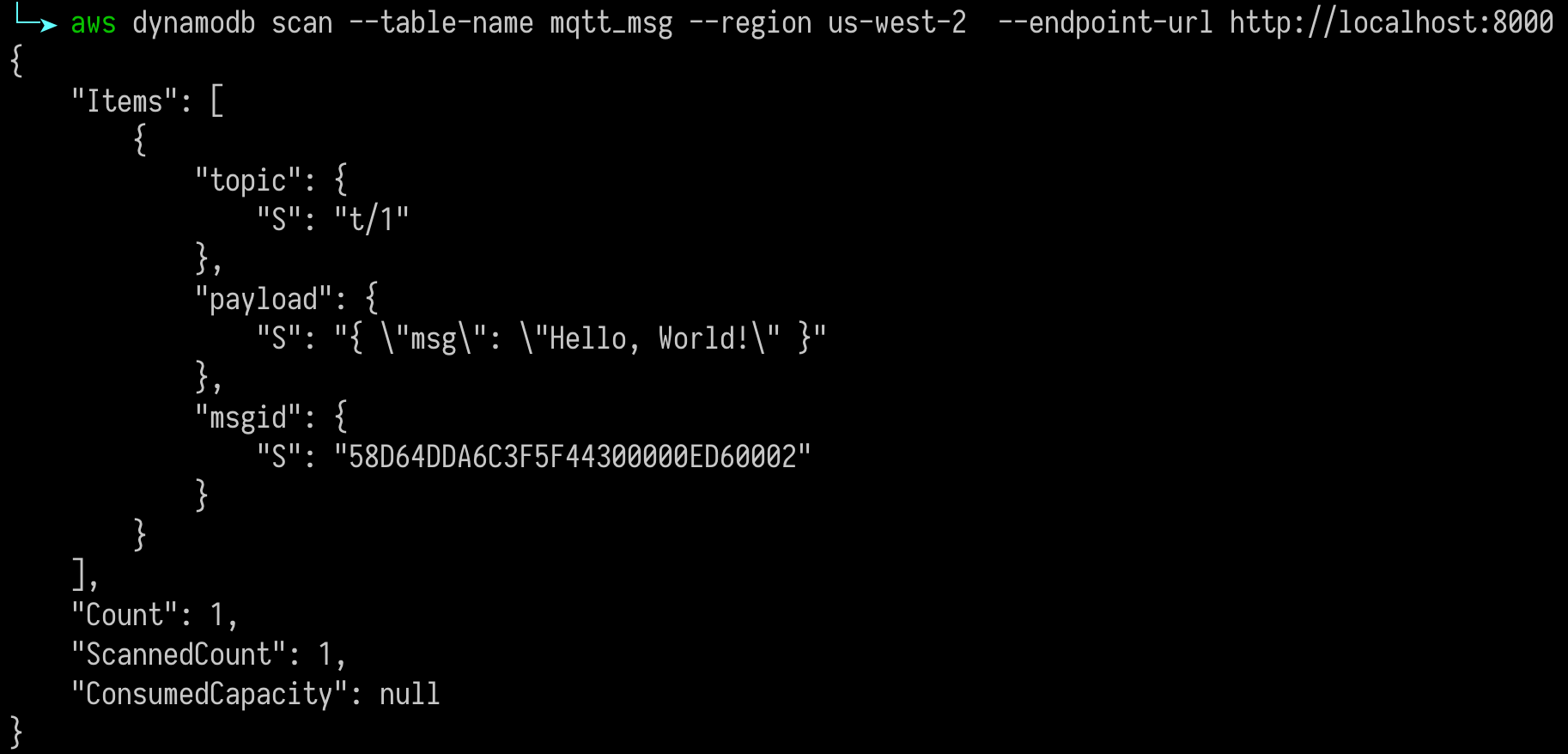
- #SET UP LOCAL DYNAMODB HOW TO#
- #SET UP LOCAL DYNAMODB ARCHIVE#
- #SET UP LOCAL DYNAMODB FULL#
- #SET UP LOCAL DYNAMODB CODE#
Try to search for some native implementation of the dynamo API in your project language which will hold all the data in memory.Īlso, a good idea is to make DB access configurable for tests so it will be easy to switch tests between mock / local db / real db. In my current project I use a custom mock which is a simplified boto API implementation.
#SET UP LOCAL DYNAMODB CODE#
While tools mentioned above are good to examine the data generated by your application the simplest way to verify your code is to build a set of unit tests.ĭynamoDB Local is too slow for unit tests and it is better to use some other dynamo mock. Table prefixesĭynamoDB has a single namespace for all tables, so it is better to use table prefixes for different environments and/or different applications. Without the -sharedDb Eclipse will use a file like AKXAX4X6XAFXIXNIXEXA_local.db. To browse an application database start the DynamoDb local with the -sharedDb flag and select ‘local’ region in the AWS regions dropdown. AWS ExplorerĪWS Explorer is a toolkit for eclipse which contains the DynamoDb GUI. Without the -sharedDb it will use _us-west-2.db file.Īccess key can be set in shell settings, but the region name is hard-coded as us-west-2 (see source in chrome dev tools, /shell/jsrepl/sandbox.js file).
#SET UP LOCAL DYNAMODB ARCHIVE#
dynamo-archive - Archive and Restore DynamoDB TablesĭynamoDB local also has a web shell available via Make sure you launched the database with a -sharedDb flag.DynamoDBtoCSV - Dump DynamoDB data into a CSV file and related blog post.dynamodb_utils - A toolchain for Amazon’s DynamoDB to make common operations (backup, restore backups) easier.

#SET UP LOCAL DYNAMODB HOW TO#
How to load a test data and dump/restore the data Any input/thoughts would be much appreciated.$ java =./DynamoDBLocal_lib -jar DynamoDBLocal.jar - inMemory -sharedDb I am a little confused because it seems like the code isn't hitting the local server what-so-ever which would obviously prevent anything else from working. The Policy statement would look like: Once you have the keys for your IAM user, you can add your profile with.

#SET UP LOCAL DYNAMODB FULL#
The quickest route is to create an IAM profile with full DynamoDB permissions. You now don’t have to worry about messing up the team’s development instance or corrupting the data.

It’s pretty much all you need when interacting with DynamoDB in a local setting. You can read the AWS docs on doing that here. That’s a wrap The three tools combined, localstack, Terraform, and NoSQL Workbench for DynamoDB make up the perfect local DynamoDB development experience. #2 C:\xampp\htdocs\AWS\Aws\Common\Signature\SignatureV4 in C:\xampp\htdocs\AWS\Aws\Common\InstanceMetadata\InstanceMetadataClient.php on line 85 If you want to use a real AWS account, you'll need to set up your environment with the proper IAM credentials. #1 C:\xampp\htdocs\AWS\Aws\Common\Credentials\AbstractRefreshableCredentials.php(54): Aws\Common\Credentials\RefreshableInstanceProfileCredentials->refresh()

#0 C:\xampp\htdocs\AWS\Aws\Common\Credentials\RefreshableInstanceProfileCredentials.php(52): Aws\Common\InstanceMetadata\InstanceMetadataClient->getInstanceProfileCredentials() ( 28: Connection timed out after 5008 milliseconds )' in C:\xampp\htdocs\AWS\Aws\Common\InstanceMetadata\InstanceMetadataClient.php:85 Stack trace: When you are not running inside of Amazon EC2, you must provide your AWS access key ID and secret access key in the "key" and "secret" options when creating a client or provide an instantiated Aws\Common\Credentials\CredentialsInterface object. When I execute the createTable() command, I don't see any activity in my command prompt window where the server is running and I get the following error: Fatal error: Uncaught exception 'Aws\Common\Exception\InstanceProfileCredentialsException' with message 'Error retrieving credentials from the instance profile metadata server. I am launching the server by running the following at the command prompt: C:\Program Files\Java\jre8\bin>java =D:\DynamoDB\DynamoDBLoca I am having some trouble connecting to my local instance of DynamoDB.


 0 kommentar(er)
0 kommentar(er)
